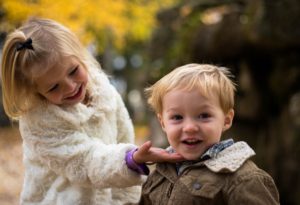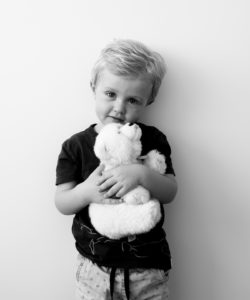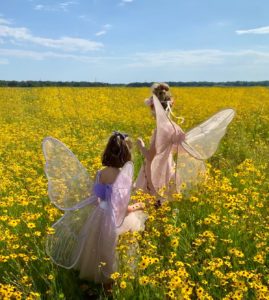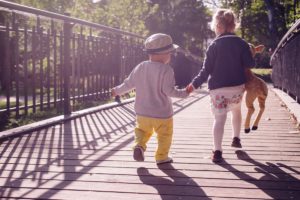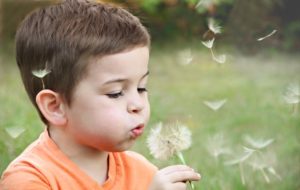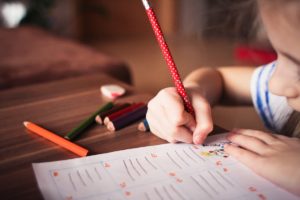Photography with kids can be tricky, to say the least! You only have a limited window of time to take photos until children get bored and lose interest, so you have to shoot quickly and have a clear plan in place beforehand.
Making the photoshoot a fun and positive experience is crucial for the success of your shoot and will help you get great, natural-looking images. When you give children in a shoot too many direct commands, they may get confused, or have a look of concentration on their face. Rather, it’s better to let the shoot happen as naturally as possible.
Whether you’re just taking a few snaps of your own kids or you’re ready to embark upon a career in portraiture, we’ve compiled this helpful guide on photography with kids, so you can have a hassle-free shoot and have fun in the process!
Getting started with kids’ photography
Preparation is key when it comes to photography with kids. When it comes to setting up your location, if you can, select a location that means something to the kids. Perhaps it’s a favourite playground, a park where they like to feed the ducks or on the beach.
Wherever it is, try to select a location which has a number of different facets; the beach is perfect, as there are so many elements within the location and a variety of things to do, like run, swim, and build sandcastles. The difficulty is getting a wide range of facial expressions, movements and emotions within the same shoot. You want a combination of close-ups, action shots, and emotional moments; a shot showing the love between two brothers; a sense of magic during play, or the innocence and wonder of discovery.
If you’re shooting someone else’s family, speak to their parents and find out what they’re looking for. They might already have enough shots of their kids at play, but they’re looking for close-up portraits. Set expectations clearly with the parents upfront and communicate that you may need to work to a loose brief rather than having a designated shot list. With kids’ photography, you’ll need to be flexible and let go of any expectations.
While preparation is key, keep in mind that photography with kids often doesn’t go to plan. A good photographer will be patient, yet will also be able to work with the kids on the day to get the shot, whatever that might be. You might have the perfect scenario in mind, but the shot doesn’t work out. You’ll need to be flexible enough to let these ideas go and, instead, work with the kids on the day to create new scenes. Your whole shoot will be contingent on the mood of the children.
Ask the parents which venue might be suitable or relevant to their kids. Try to bring some activities or props which might help, and encourage the parents to bring props of their own. All kids are different; some kids might like drawing, whereas others may like to bring their favourite toy. Bringing a familiar item will also help kids feel more secure on the day, particularly at the beginning of the shoot, whereas new items can be fun to explore with.
Setting up the shot
It’s important to establish a rapport with the children straight away, especially if you don’t know them. Engage with the child or children, ask them questions, and get them involved and excited about what is to come. Try to introduce the shoot in a playful way, and position it to the children as an adventure you’re all about to embark upon.
Ask them what they enjoy, and try to bring elements of this into the shoot. You might ask questions like:
- What’s your favourite TV show?
- What’s your favourite toy?
- What do you want to be when you grow up?
Then cater the shoot to what they love. For instance, if they love fairies, perhaps you want to bring this sense of magic into the shoot with props like a “wand”, or glitter. A location like a little stream can transform your shoot into a “fairy hunt”.
Set the tone of the shoot as positive and be active from the beginning; you want plenty of natural movement in your shots. The moment the energy fades, the kids will be bored, and your shoot could be over.
Equipment for photography with kids
If you’re just starting out doing photography with kids, you probably want to start with a DSLR or mirrorless camera. A smartphone may be sufficient if you’re just taking a few snaps with your own family on-the-go, but if you’re putting a few hours into a shoot and you want to turn your photos into canvas prints or wall art, it’s better to have a very high-quality image to start with, and a high-quality camera is best for this.
Speed is crucial for the unpredictable movements of kids, so you’ll also want a high burst speed and a camera with a good autofocus.
A longer lens can also be less intrusive when shooting with kids; it can be disconcerting taking photos right in kid’s faces, especially if they don’t already have camera-crazy parents.
If you’ve just invested in a new camera, that’s great, but a shoot with kids isn’t the right time to figure out how to use your camera. Get familiar with your camera before you go on a shoot. Try the following to get started;
- Experiment with angles and keep some of the stronger angles in mind
- If you’re just using your camera’s automatic settings, test all the different ones and find out what works for you for various scenarios
- Play with the shutter speed and aim to test on a real person (or a dog in the park!)
- Test out the manual modes and play with focus, shutter speed, aperture and ISO settings. Note that you’ll need a slower shutter speed in lower light settings
- Don’t bother with a tripod; the best way to capture images of children is in action, so the better investment is a comfortable outfit and running shoes!
- You’ll be taking a lot of images, so you’ll need a lot of battery power! Make sure you have extra batteries and plenty of memory storage prior to your shoot
Kids photography ideas
Photography with kids is unique in that it is highly active and unpredictable, yet it can also be incredibly rewarding. Kids have an uncanny ability to show their absolute true selves on camera. Unlike adults, most of the time kids have their raw emotions written all over their faces, which can lead to some interesting shots. These tips will help you capture those fleeting moments in time by taking beautiful portrait and action shots.
Here are our top kids’ photography tips.
1. Tell a story while you shoot
While you shoot, try to keep the kids entertained. Chat to them throughout the shoot, or tell a story to pique their interest. The emotions they experience while listening to your story will be written all over their faces.
Another idea is to have them help tell the story. Kids use a lot of gestures and expressive body language while they speak, which can create unique shots.
2. Keep moving
Above all, keep the energy high during the shoot. Keep the kids active, and encourage them to play naturally, rather than giving too much direction. If you’re in an interesting place, give some open-ended direct commands, but be mindful of your language.
For instance, instead of saying; “can you please move over there by the tree?” you could say “let’s go and explore near that tree. Maybe we can climb it?” By making everything sound like a game or an adventure, you’re likely to hold the children’s interest for longer.
Shooting together with the child’s friends or family will make the process easier, particularly if the children have someone else to play with.
3. Keep it short and sweet
While you do want enough time to be able to capture a few magical shots, short and sweet is best when it comes to photography with kids. If you catch them when they’re cranky, you’ll never get a good shot.
A successful shoot should be planned in advance yet flexible on the day, and shouldn’t be more than a couple of hours, even if that means you need to do a separate session on another day.
4. Use a fast shutter speed
When you’re doing photography with kids, you need to act fast, so a fast shutter speed is crucial. You want to capture those transitional moments; when a child is just about to leap in the air, blow a dandelion’s seeds, or giving a fleeting smile. To do this, you’ll need to be paying attention.
Use continuous mode on your camera in order to capture all the different movements in a sequence, like a run or a jump.
5. Get the light right
Shooting outside will provide great light and look more natural than a studio inside. Photography with kids is usually easier outside; it will also be much easier to get children to relax and be themselves, as opposed to a brightly-lit, sterile studio.
Avoid the middle of the day; aim for mornings or late afternoons for the best light. When you’re first starting out, try to use sidelight as this is generally the easiest to shoot in.
6. Enlist the help of an assistant
When shooting with kids, you need to work fast. It’s difficult to talk to the kids at the same time as shooting and planning ahead to the next shot.
When shooting with very small children or babies, it helps to have your helper stand behind you with toys, engaging with the kids.
7. Always be one step ahead
Try to anticipate the children’s moves ahead of time so you’ll be able to get the right shot. When you’re shooting with kids, not all your shots will be perfect, as the movements within the shot will be so quick and unpredictable.
You’ll probably have some blurred movement in some of your shots or a less-than-ideal crop, but this is all part of this kind of photography. It’s more important to try and get a shot with beautiful, raw emotion, rather than obsess over a shot which could have been improved with a slight change to your camera settings.
Let it go, and start shooting because you might not get that perfect moment again! Kids change their moods quickly. You may start the shoot thinking you have three hours but the kids might get tired or bored after only one hour, so get as much accomplished as early on as you can.
8. Be patient
Even though you only have a limited time with kids, you’ll also need to give them time at the start to relax into the shoot and get used to the camera, (and you, if they haven’t met you before!) This will lead to a less forced shoot. If the kids feel rushed, they might get stressed and anxious, and these emotions will translate very easily in the final images!
If the scene isn’t working, change it up, but never make the child feel as if it’s their fault. Always snap a couple of images in a certain scenario, even if you know it won’t work, otherwise, the child will start thinking they are doing something wrong.
9. Always make sure you have permission
If you’re out and about doing street photography, don’t ever take photos without permission. If you’re in a public space and want to photograph a child, always ask the parent or guardian for permission, and if you want to publish the image, you’ll need to notify them.
When working with kids that aren’t your own, at least one of the parents should always be present (and close by, ideally!).
10. Pay attention to the details
The little details can be so interesting when it comes to photography with kids; a beautiful, tiny hand drawing a picture, a close-up of their innocent bright blue eyes, little toes in the sand, or the pure joy in their faces as they run around playing. Try to capture these details.
These are the things that make kids unique and they can create the most intriguing and beautiful images. Kids grow up so fast and parents don’t have a great deal of time to take photos.
11. Get on their level
Never talk down to children from above. Always bend down to get the shot from the children’s level, otherwise, they’ll appear even smaller than they really are. You could even lie down on your stomach to get even closer. This will make the kids look larger than life, and you’ll be able to see the world from their perspective.
If possible, take photos of what they’re doing from over their shoulders to get their perspective, whether they are reading, painting, or just running around. Or, get a bird’s eye angle above of the kids playing on the ground below.
Don’t feel as if you need to always take the shot straight-on looking at their face as well; you can shoot kids from behind while they’re running or playing as well.
12. Have fun!
Go with the flow on the day, and try to enjoy the experience! Photography with kids is about being able to “read” the children and pick up on what they’re feeling. If they’re bored, switch up the shot or start a new activity. If they want to continue with it, let them, but experiment with different angles to switch things up and get a new angle.
Try and have fun; run around, get active, play games with them and be a kid! When you start to see things from their perspective it will be easier to connect and get the shots you want. Your ultimate objective is for the kids to have fun. That way, you’ll get those priceless images that everyone will love.
13. Editing your photos
Editing is easier than you might think, yet you’ll be amazed at the difference it can make. Just a few small editing changes can turn an average photo into something truly magical or can “save” an otherwise dark, dull, or overly-bright image.
Some simple edits include:
- Removing red eyes from the shot
- Cropping
- Adjusting sharpness
- Adjusting saturation and white balance
- Changing to sepia or black and white
To edit, Lightroom is an easy-to-use, intuitive program which is fairly affordable. It has both desktop and mobile versions which can be used to make simple edits. With editing, often less is more. An image that is edited well will look great but will look as if it hasn’t been edited, even though you may have spent half an hour editing it! On the other hand, an overly-edited image can actually make an image look worse than it did to begin with. Practice restraint while editing and you’ll end up with some beautiful images.
Once you have your priceless images, use them to decorate your home. Our canvas prints are an affordable, yet thoughtful gift for a family and are the perfect way to decorate.
If it’s for your own family, you can even ask your kids to get involved in the process. Ask the kids to choose their favourite shots and decide which arrangement would look best. You might want to select a few prints for photo blocks for bookshelves, which are particularly durable in kids’ rooms. Or, let them help you select a wall display or photo collage arrangement on beautiful canvas prints. The choice is yours; get creative!


